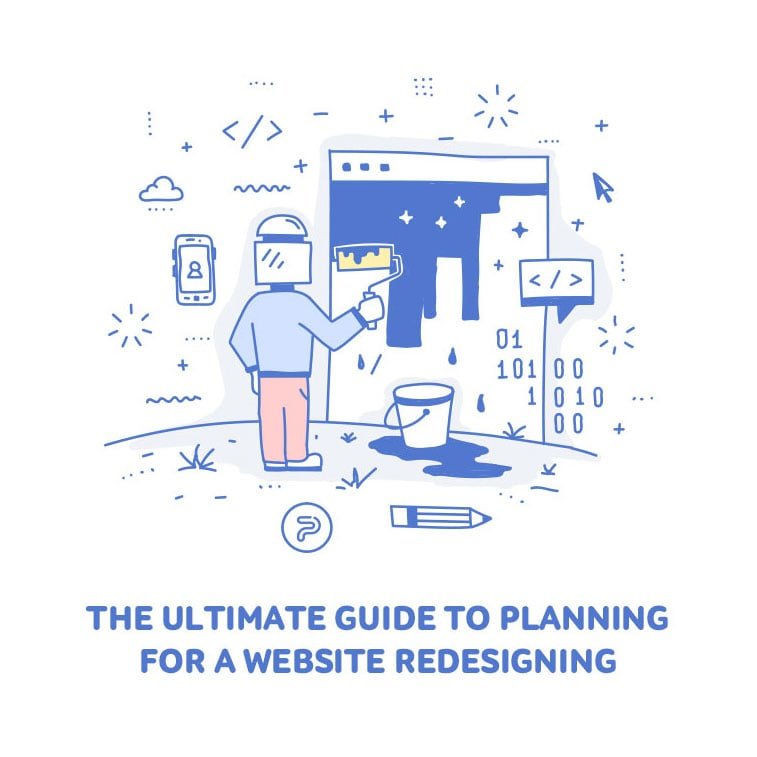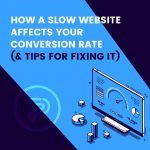With literally millions of websites on the world wide web, when a business owner decides to refresh their web app, let’s just say they have their work cut out for them, especially if they want to catch up with the best-performing sites and the latest trends. Creating and launching a website itself can be hard, time-consuming, and stressful. Making the decision to redesign an old website is an even harder one. However, it happens more often than you’d think.
Getting Started: Be a Man With a Plan
Whatever your reasons may be for your revamp, it’s paramount that you have a solid redesign plan, to begin with.
Why is this important? A great website redesign strategy just makes the entire process easier and more streamlined. This is especially true If you are looking to revamp a huge website. Also, if you are working with an agency, it can help the folks over there a great deal and can save both of you from unwanted headaches.
Not to mention, having a plan can save you some money too. Or at least, it can show you in advance how much the entire project would cost.
That being said, in this article, we’ll give you a few awesome pointers on what to include in your redesign plan, and will give you more info on why these steps are so important and beneficial for your project.

Image source: popwebdesign.net
Remember, if you’ve been on the digital scene for a while now, you know that without a strategy, there’s no success and the same analogy applies to your website redesign as well. The better your project plan is, the more likely you will end up with a fresh web app that will not only help you get better traffic but help you boost your sales and improve your brand’s presence on the internet.
The 10 Crucial Steps of a Great Redesign Strategy
So, let’s see what are the most important strategic steps you should take when creating a redesign plan to make both your and your designer’s life easier.
1. Familiarize Yourself With Your Current Website
When you are working with an agency with the sole purpose of redesigning your web app, you must know everything about the current version of it. Name everything you like and everything you dislike. Things you want to change and the features you want to save.
Having at least a good idea of what you want your site to look and feel like can serve as a strong base both for you and for your designers who can get a better idea of what kind of results you want to see.
Also, by letting them know what you want, they can prepare a list of their own suggestions that can help improve your website even further right from the start.
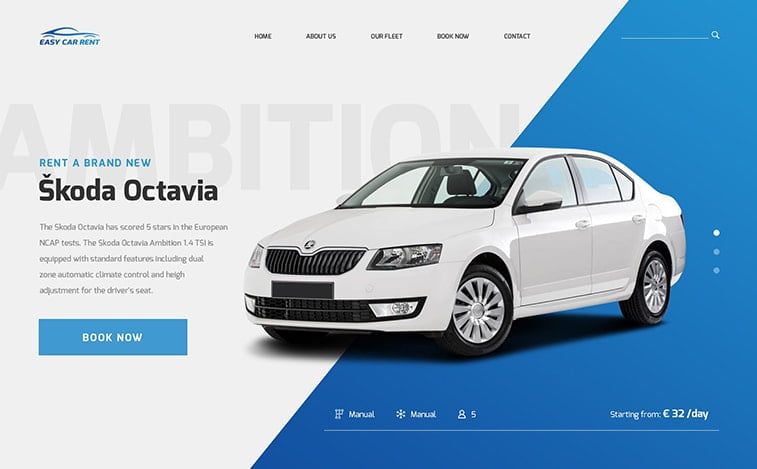
Image source: popwebdesign.net
The backbone of a good project plan is cooperation so let them know everything you’re sure about in advance. It takes out the guesswork and speeds up the entire project significantly.
That being said, take your time studying your website. Make a list of the features that you want to save and a list of the things you want to scrap. Also, you may even create a third list of new features you want to introduce, and another one for features that you have on your site but can use some improvement. The more thorough you are with your preparations, the better the end product will be.
2. Inspect Your Website and Define your Goals
When you are redesigning your website it’s not only because of personal preferences. Maybe your website is just simply too slow and repels users. Is your design outdated and your navigation confusing? Your bounce rate is way too high? Do you need to scrap a few pages? Your content isn’t ranking high? There are numerous reasons to do a site revamp and you need to list them out and let your web designers know.
As with the first step, these goals can help them a great deal by giving you suggestions regarding which route to take to get the best redesign results and improve on the features that you wish to carry over.
In short, you can create goals like
- Increasing sales
- Increase lead generation
- Decreasing bounce rate and improve the average time that your visitors spend on your site
- Earning new customers
- Better backlink generation
- Introducing new features to improve user-experience
Having these goals defined is utterly important since it can give you and your designers a better view of what you really want and how you all should go about executing it.
Planning is crucial not just because of your satisfaction but because of your visitors’ too. According to a study from Stanford University, 75 percent of people judge business credibility based on website design and functionality.
It’s almost self-explanatory really. If you have a website that’s difficult to navigate or slow-loading, your visitors will most likely abandon it. If these are things that are plaguing your website, it’s time for a refresh.
Also, old features, outdated looks need to be taken care of. If your website isn’t flexible enough and doesn’t support vital plugins and features, you’re losing potential clients and money.
All that being said, having your goals set right from the start is crucial since it will anchor you and give you direction where to go next in the redesigning process.
3. Determine How You Should Take Action
This is exactly the last sentence from the previous step. Once you and your web design team managed to pinpoint the exact areas where you want to see significant changes and improvement, it’s time to determine how you should go about executing these changes.
If it’s loading speed you wish to boost, you should determine the exact method to do so. It’s important that both you and your designers on the same page regarding these things.
If you want to improve your time-on-page metrics, you can use video content or custom graphics. These can have a significant effect on your overall design so before starting the project, you should layout and talk over every little detail with your designers to see what’s feasible, what’s in your budget’s range and also, make sure that your designers use those solutions that you’ll be satisfied with.
4. Pick a partner
Whether you are doing your redesign in-house or you want to start the project with a professional agency, it’s good to do your research first and see who is the best suited to pull off the job within your budget range and goals.
- Ask for recommendations, do your research online or ask other business owners about who they worked with in the past and about their experiences.
- If you seek to partner up with an agency, make sure to research their work, take a thorough look at their portfolio.
- Meet up with them and discuss your goals, ideas and generally, tell them about your ideas about your website redesign.
- Make sure that the agency you are working with has the necessary staff you need. UX, UI designers, content managers, etc.
- Check out every agency you hear about then pick the one that best suits your needs.
5. Inspect your content
Review the content you currently have on your website. Content is still king when it comes to search engine rankings and you shouldn’t overlook the importance of it when you are redesigning your website.
Have your web development team check those current pages that generate the most traffic, the most searched keywords, inbound links and such and see where your current content can add value to your redesigned site.
What this means is that quality content will most probably stay on your refreshed website and the poorly-written or outdated blogs will probably be scraped.
Remember, content isn’t only important because of your rankings. It’s also the strongest link that connects you to your visitors and customers.
No matter how you look at it, quality content is a must for your website redesign
6. Keep your users in mind
We’ve already mentioned the importance of connecting with your audience. Well, if the content is one of the two main things you can have a positive impact on your costumers than user-experience is the other.
That being said, you want an engaging site that’s easy to navigate with clear direction and inspiring content. Also, set your calls-to-action right to make sure that the more your visitors stay on your page to more likely they become leads or make purchases.
Make sure to create an easy-to-use website with personalized content, easy and safe login options.
Also, don’t forget that your site must be optimized for all devices across the board. This means that your site must perform smoothly not just on laptops and desktops but on mobile devices too, like phones and tablets.
7. Optimize for mapping and engines
To keep your visitors on your new site, you need to create one that will have a straightforward and easily understandable layout so your visitors can navigate through it with ease.
A great sitemap can give them direction on where to go next. These maps create relationships between your pages and other website components. This isn’t important only because of user-experience. Google also uses this info to create an opinion about how your website works along with each of its elements.
Make CTA buttons visible, categorize your sub-pages and map out your website the best way possible.
Also, make sure that your development team also uses the latest practices to optimize your website for search engines. Since you’re already going back to the drawing board, it’s a great opportunity to clean up dead links, optimize savable content and pages.
8. Get Started!
Once you’re done with all the planning, listing, goal-setting, and everything else, it’s time to start working on the project itself.
While this is the part where your designers do most of the work, you shouldn’t go cold turkey on them. Be an active part of the process, keep in touch with them, ask how the project is going, and be helpful.
On the other hand, don’t get carried away. To make everyone’s life easier, be thorough with your goal-setting, action plans, and so on. Stay away from trying to implement drastic changes or from “revamping” your project halfway through. Testing is an important part of every digital project, but when you shift focus and alter plans constantly, chances are, the result will suffer.
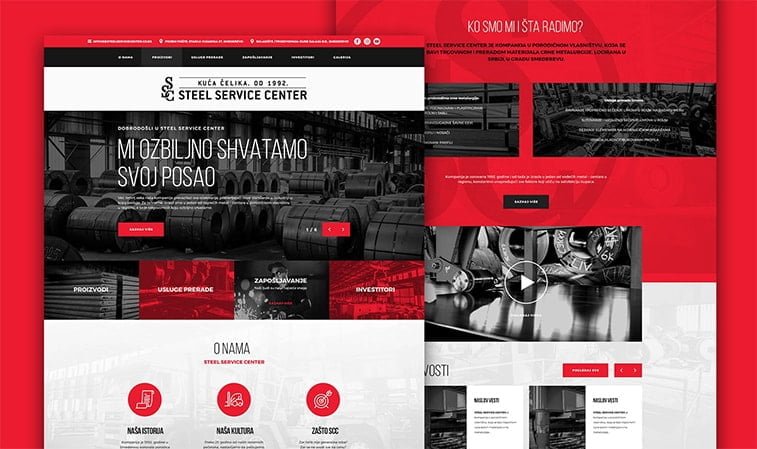
Image source: popwebdesign.net
9. Analyze and See What Needs To Be Worked On
After your designers are done with the revamp process and you’ve approved all the changes, it’s time to analyze the results and test them if they manage to solve your initial problems.
If loading speed was your biggest concern, see if your site loads faster. This is pretty much a no-brainer. If you wanted to drive more sales, check out those metrics after a week or a month. If you had problems keeping visitors on your site, check out if those metrics have improved following your site launch.
If you see the improvements you wanted to have in the first place, you are good to go. If not, it’s back to the drawing board.
10. Consider Different Approaches and Other Methods
If the redesign is a success than your website is offering more value to your customers than it did before. Not to mention, it’s probably making you more money too. However, if you want to see even further improvements, feel free to ask your designer team for additional advice. They might suggest even more robust design changes or they might recommend other digital tactics that can help you boost your digital presence even more. Things like SEO (search engine optimization) content marketing, social media marketing, and other tactics can all help you harness the true potential of your new and improved website.
And chances are, that your web design agency already happens to offer those services.
Other Aspects To Take Into Consideration
As we’ve already mentioned, there can be lots of reasons to redesign a website and the best way to ensure success is by mapping out everything you need to do upfront so you know what to look forward to and hit any kind of obstacles down the road, you’ll know how to overcome them.
Because of that, a simple project plan might not be enough. As such, here are a few more extra tips that might help you come up with the best revamp strategy.
1. Make Sure You Know What You Want
As said above, you should have a clear idea of what you want to change to get better metrics on your site. When you’ve managed to do this, it’s easier to determine a budget, the estimated duration of the project, and who to hire – in case if you’re not working with an agency already.
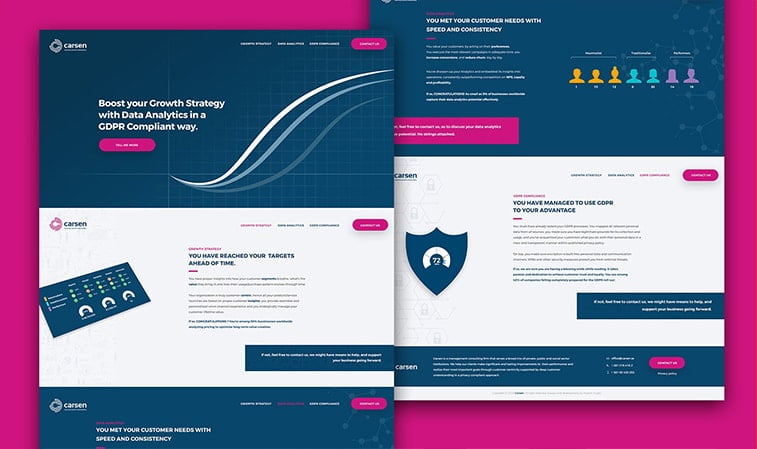
Image source: popwebdesign.net
2. Setting a Budget
Determining the ideal budget and getting familiar with revamping costs might be the first thing you want to do and set your goals and changes accordingly. If money isn’t a problem, then you don’t have to worry about limitations but most site owners aren’t like that and have a stricter approach regarding their digital budget.
Do your research, examine the prices, and calibrate your must-change list accordingly. You’ll notice that smaller things, like a blog redesign, will be noticeably cheaper than, let’s say, en entire website redesign.
Set a budget that enables you to improve upon the most crucial elements of your website first. Later on, you can implement even more changes if you’re on a strict budget. In some cases, you can strike a good deal with your agency, and implementing all changes in a larger timeline, in a more flexible fashion.
3. Finding Your Agency
Finding a web design agency may seem like hard work but generally, it’s not that much of a hassle if you know where to look.
First of all, let us tell you why you should opt for an agency. A site revamp is a complex, tedious, and often a daunting process, and if you need results fast(er), a reputable and professional agency is your best bet.
With their knowledge and experience, they can deliver the best results in the shortest time frame. However, you shouldn’t expect that any agency will finish the entire project in a few workdays. If you want solid results and a successful redesign, you need to give them more time. Patience is key, never forget that.
So, when you’re looking for the right team to get the job done, just try to find out who are the people behind those website designs which you like or which inspired you the most. That’s a good start since you already know that the end results will be great. On the other hand, you can always ask your fellow entrepreneurs for recommendations.
Don’t forget, when choosing an agency, be mindful of your budgets and needs. You don’t want to hire a greenhorn team to save money, but you don’t want to go with the most expensive option either. Speak with a few agencies and see which offers the most bang for your buck. If everything checks out, hire them, and get to work.
Your Timeline: Will It Take Weeks or Months?
The short answer: It may take weeks. Or months. The long answer: It may take weeks. Or months, or even more. There are a lot of things that can affect the project’s timeline so it’s rather difficult to give a solid answer to this simple question.
However, here are a few things that might help you out:
– The number of people working on your project can significantly affect the project’s length. If you’re working with a large agency, more specialists will be working on your revamp, meaning that it will be finished sooner. On the other hand, a smaller company might have fewer employees, meaning it might take them longer to finish the same amount of work.
– The extent of your project can also determine the timeline of your project. If it’s only a small color scheme refresh, then it should be relatively fast. However, if it’s a complete rehaul, you need to be patient. When there’s more to do the project tends to take longer to finish.
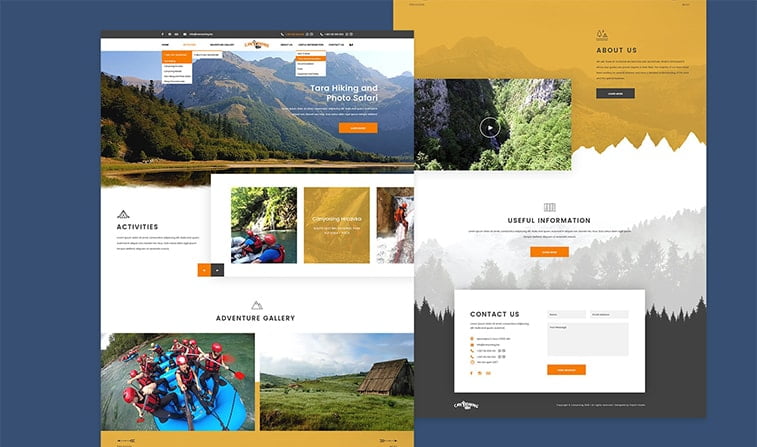
Image source: popwebdesign.net
Don’t forget, even smaller details can add up. Do you want to change the navigation and multimedia content too? How about images? All these things will take time as well.
– Your website’s size can also play an important role in giving a reliable answer. A smaller website can take up much less time to redesign than a large one with numerous pages. In this case, the changes you’ve determined and the goals you’ve set can also affect the amount of time it takes to finish it up.
The Takeaway
As you can see, redesigning your website is a complex process, however, if you have the right approach and the right plan, it should be smooth sailing.
Don’t forget to always set your goals and budget first. These are the most crucial steps. Both can influence the other so it’s paramount that you do your research regarding prices and rates when you’re listing the changes you want on your website. If it seems like too much to chew all at once, consider strategically changing the most crucial things first, and return to the smaller redesigns when your budget lets you do it conveniently without financial sacrifices.
On the other hand, be patient. A good project will take time and you must understand that. The more changes you have, the larger your site, the fewer people working on it, the longer the project will take.
Be active, and most importantly, be proactive. Talk to your agency professionals about your goals and changes. Let them know what you want and how you want it. During the revamp process, help them whenever you can and make sure that everything’s going as you planned. That being said, try and figure out a solid and impeccable plan from the beginning. Sudden changes halfway through and last-minute fixes probably won’t be doing anything good to your website.
All in all, the best you can do is to be prepared for the project. With that, you will potentially save both time and money and end up with a website that will have everything you needed and wanted.
